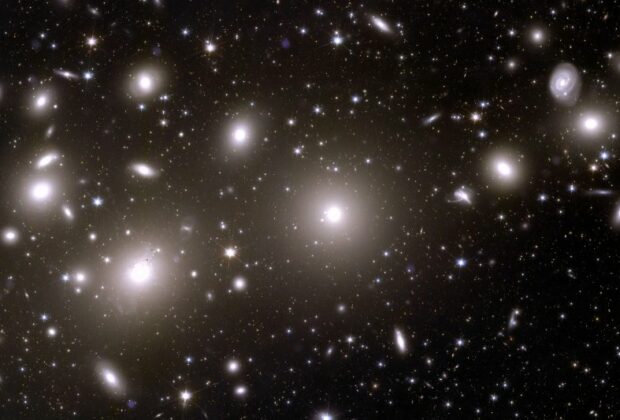To commemorate the first science publication derived from the telescope’s early release observations, breathtaking new photographs captured by the Euclid space telescope showcase an astounding variety of celestial vistas.
Launched last year, the European Space Agency project seeks to unravel the mysteries surrounding dark matter and dark energy, two components that make up the majority of the known universe but are mainly unknown due to their difficulty to study. Because dark matter does not interact with light, scientists are unable to directly witness it, but they can infer its existence from its gravitational effects, for example.
The answer is in utilizing a highly sensitive instrument such as Euclid to observe far-off galaxies and determine the impact of dark matter on them. The Euclid project scientists of the European Space Agency, Valeria Pettorino and René Laureijs, stated, “We have to accurately measure the shapes of over 1.5 billion distant galaxies.” However, these galaxies can be small and dim, and the atmosphere of Earth blurs them when viewed from Earth. Euclid has less interference while detecting and measuring these galaxies because it is positioned above the atmosphere in space.
As a result, photos obtained from spacecraft display an exceptional degree of detail across a vast swath of the sky, and are four times sharper than those obtained from ground-based telescopes. They display things such as galaxy clusters, star-forming areas, and the huge neighboring spiral galaxy known as NGC 6744 using data from a mere twenty-four-hour observation period.
In addition to providing meticulous measurements of galaxies for the study of dark matter, the telescope will yield information on other celestial objects. “We will be able to also search for objects that were very difficult to detect before Euclid such as free floating planets, ultra-cold stars, brown dwarfs, galaxies with very low surface brightness or very high redshift quasar populations,” stated Pettorino and Laureijs. “Euclid may also reveal new objects which have never been observed before.”
The universe will be examined for things such as “rogue” or free-floating planets—planets that travel the cosmos by themselves rather than circling stars—in stellar nurseries like Messier 78. These rogue planets, estimated to number in the trillions, are thought to exist in our galaxy, but studying them is challenging because they frequently interact with no surrounding objects. Euclid allows for the observation of rogue planets as small as four times the size of Jupiter, which is enormous when compared to the planets in our solar system but minuscule when compared to stars.
Euclid will also be able to observe entire clusters of galaxies, such as the almost 50,000-galaxies-strong Abell 2390 cluster, at the opposite extreme of the mass scale. Because these clusters are so enormous, they distort light from distant galaxies, causing them to seem as a distorted shape like an arc or disk. This phenomenon is known as gravitational lensing. Because the mass and lensing effect increase with the amount of dark matter in a cluster, researchers are able to examine the amount of dark matter existing in the cluster.
Pettorino and Laureijs stated that the initial photographs from Euclid had surpassed their expectations, as data from a single day’s worth of observations have already shown millions of distinct objects. Euclid will examine a third of the sky over the following six years, allowing it to uncover even more of the cosmos.
Pettorino and Laureijs declared, “This is the start of an extraordinary journey towards a fundamental understanding of the Universe we live in,”








